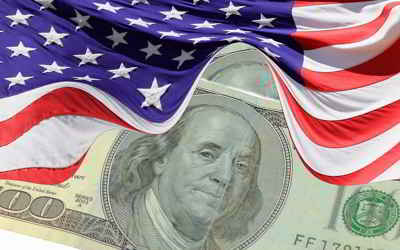Vermont Economy
Agriculture and Industry in Vermont
Vermont economy is a set of human and social activities and institutions related to the production, distribution, exchange and consumption of agriculture and industry goods and services. The balance between Vermont various economic sectors differs largely between various regions and other states in the US.Vermont Agriculture and Industry
Vermont's real gross state product in 2012 was estimated to be $23,912 which was $163,528 and 87% lower than the national state average, $187,440. Vermont has the 51st highest GSP out of the 50 states.
The rise of manufacturing in towns and villages during the early 19th century created a demand for produce for the non-farming population. Consequently,
commercial farming began to crowd out the subsistence farming that had predominated since the mid-18th century. Grain and beef cattle became the chief
market produce, but when the rapidly expanding West began to supply these commodities more cheaply and when wool textile mills began to spring up in
Southern New England, Vermont turned to raising sheep.
After the Civil War, however, the sheep industry, unable to withstand the competition from the American West as well as from Australian and South American
wool, began to diminish. The rural population declined as many farmers migrated westward or turned to the apparently easier life of the cities, and
abandoned farms became a common sight. The transition to dairy farming in the twenty years following the Civil War staved off a permanent decline in
Vermont's agricultural pursuits.
Since the 1960s, Vermont's economy has grown significantly with booms in the tourist industry and in rural homebuilding, and with the attraction of
high-technology firms to the Burlington area. Dairy farming has long been dominant in Vermont agriculture, although it has declined somewhat. Apples,
cheese, maple syrup, and greenhouse and nursery products are important. The state's most valuable mineral resources are stone, asbestos, sand and gravel,
and talc. In the area around Rutland and Proctor is a noted marble industry, and at Barre the famous Vermont granite is quarried and processed.
The manufacture of non-electric machinery, machine tools, and precision instruments is also important. The textile industry, once dominant in Burlington,
has declined, but the manufacture of computer components, food products, pulp and paper, and plastics has helped to compensate for this loss. Cottage
industries have long thrived in Vermont, making a variety of products from knitwear to ice cream. Tourism is also vitally important to the state economy.
Vermont Agriculture:
Dairy products, cattle, hay, apples, maple products.
Vermont Industry:
Electronic equipment, fabricated metal products, printing and publishing, paper products, tourism.
Over the past two centuries, Vermont has seen both population explosions and population busts. First settled by farmers, loggers and hunters, Vermont
lost much of its population as farmers moved West into the Great Plains in search of abundant, easily tilled land. Logging similarly fell off as over-cutting
and the exploitation of other forests made Vermont's forest less attractive. Although these population shifts devastated Vermont's economy, the early
loss of population had the beneficial effect of allowing Vermont's land and forest to recover from the excesses of human beings. The accompanying lack
of industry has allowed Vermont to avoid many of the ill-effects of 20th century industrial busts, effects that still plague neighboring states. Today,
much of Vermont's forest consists of second-growth.
Of the remaining industries, dairy farming is the primary source of agricultural income.
A unique part of Vermont's economy is the manufacture and sale of novelty goods and foods for cottage industries and niche markets. Examples of these
are such exports as Cabot Cheese, the Vermont Teddy Bear Company, Burton Snowboards, King Arthur Flour, and Ben and Jerry's Ice Cream.
Captive insurance plays an increasingly large role in Vermont's economy. With this form of alternative insurance, large corporations or industry associations
form standalone insurance companies to insure their own risks, thereby substantially reducing their insurance premiums and gaining a significant measure
of control over types of risks to be covered. There are also significant tax advantages to be gained from the formation and operation of captive insurance
companies. According to the Insurance Information Institute, Vermont in 2004 was the world's third-largest domicile for captive insurance companies,
following Bermuda and the Cayman Islands.
Tourism is the state's largest industry. In the winter world famous ski resorts like Stowe, Killington, Stratton Jay and Okemo draw skiers from around
the globe, although their largest markets are Boston, Montreal and the New York metropolitan area. In the summer resort towns like Stowe, Manchester
and Woodstock draw visitors looking for a mountain vacation. Resorts, hotels, restaurants, shops and attractions employ many people year-round.
Numerous summer camps and furniture- make up a component of Vermont's income. Trout fishing, lake fishing and even ice fishing draw the outdoorsman
to the state as does the excellent hiking on the Long Trail. Several noteworthy horse shows are annual events. Golf courses are springing up with spas
to service the weary client. One major fashion outlet mall isn't really a mall but the old town of Manchester gentrified.
The towns of Rutland and Barre are the traditional centers of marble quarrying and marble shaping in the USA. For many years Vermont was also the headquarters
of the smallest union in the USA, the Stonecutters Association, of about 500 members.
In recent years, Vermont has been deluged with plans to build condos and houses on what was relatively inexpensive, untouched land. Vermont's government
has responded with a series of laws controlling development and with some pioneering initiatives to prevent the loss of Vermont's dairy industry.
In 2001, Vermont produced 1,040,000 liters of maple syrup, about a quarter of the US production.

US economy is relies on private decision-making ("economic freedom")




